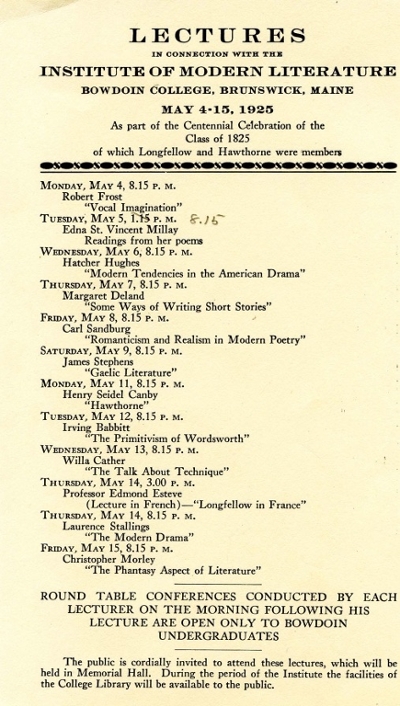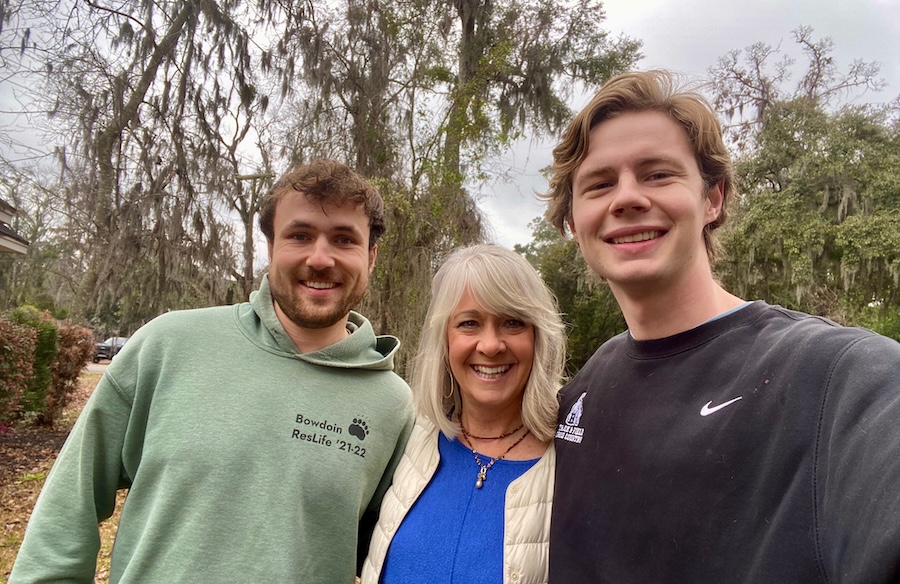Honoring Longfellow and Hawthorne: American Literary Greats Gathered at Bowdoin in 1925
By Tom Porter
They were there to honor the Class of 1825 and two of its most famous sons, Henry Wadsworth Longfellow and Nathaniel Hawthorne, said Bowdoin’s Secretary of Development John Cross 76, who is also unofficial college historian.
A dozen writers and literary critics were invited to attend an Institute of Modern Literature event to celebrate that centennial. Ninety-five years later, Cross chose this gathering as the subject of a recent public talk delivered as part of the Brunswick community’s annual Longfellow Days celebration.
“The event,” said Cross, “was the second in a series of biennial institutes established by President Kenneth C. M. Sills, Class of 1901, who saw them as a way to bring outstanding figures in politics, the arts and humanities, and the natural and social sciences to the campus.” The first institute, held in 1923, was put together by modern history scholars, Cross continued, “and featured eight participants, seven of whom had been involved directly in the Paris Peace Conference of 1919 that spelled out treaty terms, international boundaries, and reparations in the wake of World War I.” This event attracted the attention of US President Warren G. Harding, who expressed his enthusiasm in a letter to President Sills. Bowdoin College’s biennial institutes continued into the 1960s, said Cross, “but none of them attracted the attention of the 1925 event.”
The original program for the institute can be viewed in the Bowdoin College Library’s Special Collections & Archives and it gives an indication of the intensity and focus of the celebration. “The guests delivered evening lectures, for the most part,” said Cross, “held on the second floor of Memorial Hall, where there was typically standing room only. Each lecture was followed the next morning by a round table discussion with the featured speaker and Bowdoin students."




The opening talk, by Robert Frost, was titled “Vocal Imagination” and delivered in dramatic fashion, said Cross, citing newspaper reports of the time. “In his ninety-minute lecture Frost used Longfellow’s ‘The Flight to Egypt’ and two of his own poems, ‘Birches’ and ‘The Code,’ to demonstrate how the spoken word fires the imagination.”
Edna St. Vincent Millay attracted “the most breathless reviews,” said Cross, quoting Arthur Staples (Class of 1882) in The Lewiston Evening Journal. “Miss Millay has a sort of post-Titian hair, a complementary color to her gown, last evening…It looked like the color of the inside of a million-dollar limousine.” It was Carl Sandburg who attracted the largest crowd, we are told, bringing a guitar onto the stage and singing a number of songs, before reading from several of his works, including the celebrated Chicago Poems
Another important part of the story occurred shortly after the literary institute, said Cross, when honorary degrees were awarded to the daughters of Longfellow (Alice Mary Longfellow) and Hawthorne (Rose Hawthorne Lathrop) at the 1925 Commencement ceremony.



